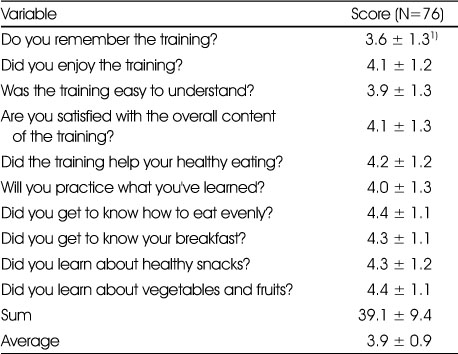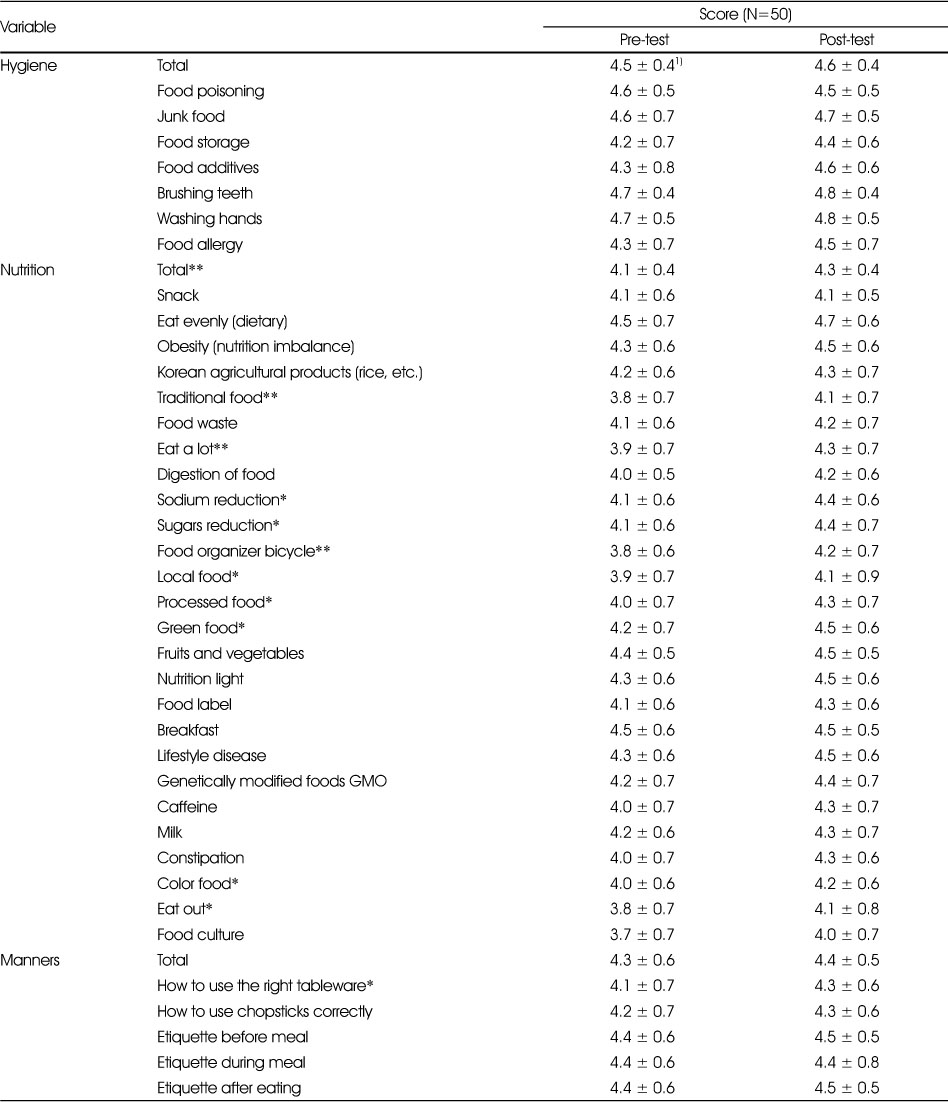Development and Application of an Education Program for Healthy Dietary Life for Elementary School Aftercare Class Children
Article information
Abstract
Objectives
This study aimed to develop a school-centered healthy eating environment for children in elementary care classrooms and prevent incorrect eating habits and obesity through the development and application of standardized healthy eating habit-forming educational materials.
Methods
Ten schools in eight districts of Gyeonggi-do and 400 students from 19 care classes were selected. Based on the developed educational materials, the program was applied to students once in two weeks. ‘Notices for Parents’ forms were also sent to the students' home to educate their parents. Pre and post-surveys were conducted to evaluate the effectiveness of the education. The pre-education, education, and aftercare were conducted from September 28 to September 31, 2016, from October 3 to November 30, 2016, and from December 5 to December 9, 2016, respectively.
Results
The healthy eating program for elementary care classes was designed to develop a school-centered healthy eating environment and provide standardized educational material for healthy eating habits. Twelve educational topics were developed: 〈Eat Evenly〉, 〈Eat Breakfast〉, 〈Eat vegetables and Fruits〉, 〈Clean Body, Strong Body〉, 〈Healthy and Tasty Snacks〉, 〈Keep Healthy Weight〉, 〈Food that enters our body〉, 〈What is safe food?〉, 〈Food selection and Storage〉, 〈Our land, Our grain〉, 〈Enjoy Traditional Food〉, and 〈Food manners〉. Moreover, the materials were produced in four forms: for students, for after school caring teachers, for external specialists, and for parents. The effectiveness evaluation was conducted to confirm the application of the program. The average eating habits score was 3.3 ± 0.6, with no significant difference between before and after application. The score of overall satisfaction of the education was 3.9 ± 0.9. The most satisfying content was ‘Did you get to know how to eat evenly?’. Significant increases were observed in two contents for parents regarding their children's knowledge changes after the education: ‘Five nutrients needed for growing children’ and ‘Knowing sugar foods and sugar-containing foods’. On the other hand, their educational satisfaction was 3.6 ± 0.6, which was lower than the children's satisfaction. This might be because their education was conducted only through the ‘Notices for Parents’ form.
Conclusions
In the long term, the healthy eating habit-formation education for lower elementary school children is expected to be beneficial. To prevent obesity and establish healthy eating habits of children, it is important to develop healthy eating education programs centered on elementary school aftercare classes, including the development of educational materials and an application system through connection with the home and community.










